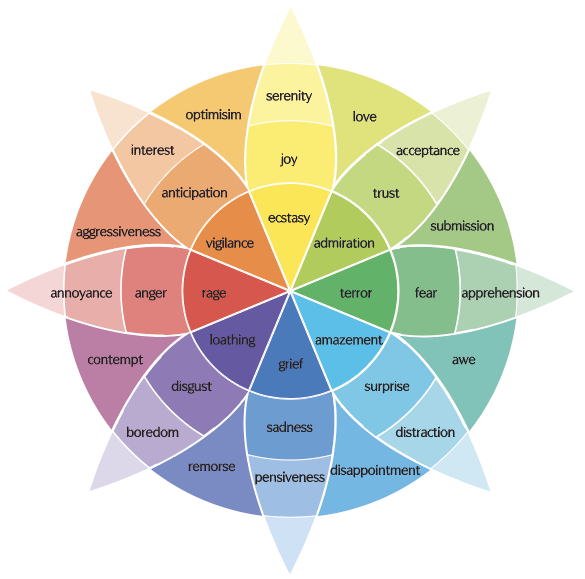Lessons from Plutchik’s Wheel of Emotions | Lições da Roda de Emoções de Plutchik
Over the last two weeks, 7th grade has explored the idea of complex emotions using Plutchik’s Wheel of Emotions as their guide. Students learned how emotions such as aggressiveness, love, disappointment, awe, and remorse don’t appear out of nowhere, but grow out of combinations of more basic feelings. Together, they discussed what these emotions mean, what situations often trigger them in real life, and how different people might express them—sometimes clearly, and sometimes in ways that are harder to notice.
Throughout their lessons, students also reflected on their own experiences. They examined how they tend to show certain emotions, how others might show them differently, and why emotional expression can vary from person to person. One of our key class activities asked students to identify emotions in others within short, everyday scenarios. This helped them practice an important skill: recognizing that understanding someone’s feelings requires active attention and willingness to look for emotional cues, rather than assuming we already know what they feel.
These conversations and activities helped students build emotional vocabulary, empathy, and awareness—not only of their own inner world, but of the emotional experiences of those around them.
Nas últimas duas semanas, a turma do 7.º ano explorou a ideia de emoções complexas, usando a Roda das Emoções de Plutchik como guia. Os alunos aprenderam que emoções como agressividade, amor, desilusão, admiração e remorso não surgem do nada, mas resultam da combinação de sentimentos mais básicos. Em conjunto, discutiram o significado destas emoções, as situações que frequentemente as provocam na vida real e a forma como diferentes pessoas as podem expressar — por vezes de forma clara e por vezes de maneiras mais difíceis de perceber.
Ao longo das aulas, os alunos também refletiram sobre as suas próprias experiências. Analisaram como tendem a manifestar certas emoções, como os outros podem fazê-lo de forma diferente e por que motivo a expressão emocional varia de pessoa para pessoa. Uma das atividades principais da turma pediu aos alunos que identificassem emoções nos outros em pequenos cenários do quotidiano. Esta prática ajudou-os a desenvolver uma competência importante: reconhecer que compreender os sentimentos de alguém exige atenção ativa e disponibilidade para procurar sinais emocionais, em vez de assumir que já sabemos o que a outra pessoa sente.
Estas conversas e atividades ajudaram os alunos a ampliar o seu vocabulário emocional, a desenvolver empatia e a aumentar a consciência — não apenas do seu mundo interior, mas também das experiências emocionais das pessoas à sua volta.

